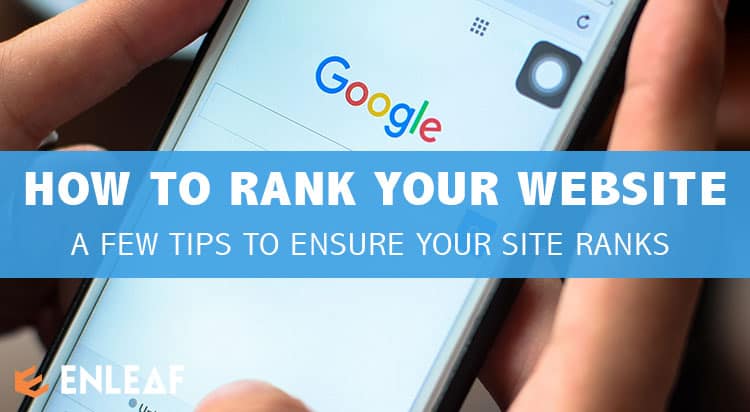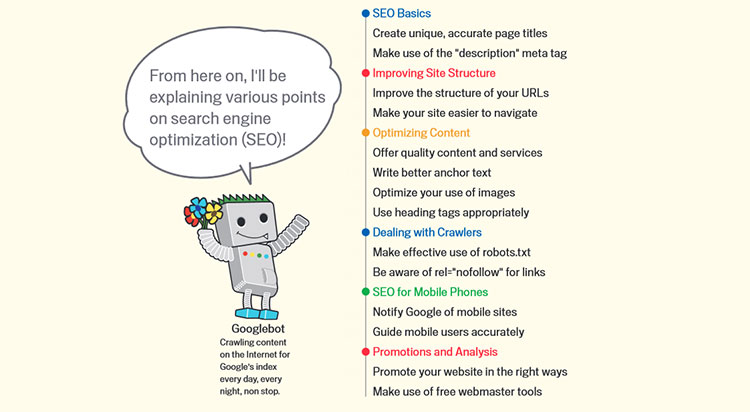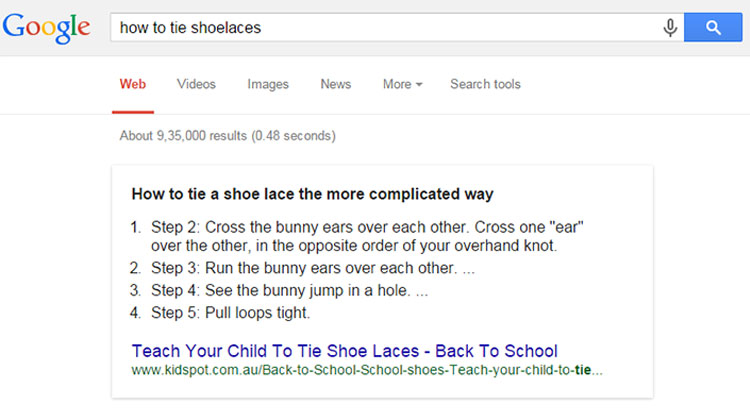
12 SEO TIPS THAT WILL HELP YOU IMPROVE GOOGLE RANK IN 2022
Search Engine Optimization is an ever-evolving craft that can be hard to get a handle on. Not only do the rules of the road constantly change, but often much of the advice you read online is either speculative or outdated.
This makes knowing where to start a huge challenge. In this post, we outlined what items are most relevant in 2022 for improving your website’s visibility and rankings.
When performing search engine optimization in 2022, you have to consider two things.
- First, you need to have good strategies that produce results.
- Secondly, you need to make sure that those strategies will not eventually produce a penalty that altogether knocks you out of the search results.
It does not matter if you are focusing on local SEO or ranking nationally. To accomplish both of these and improve Google rankings fast, you must use sound SEO strategies that fall under Google’s guidelines. It’s also important to listen to Google when they explicitly tell you something is important.
Tip 1: Using Google’s Own Guidelines To Rank Better

Google’s own Search Engine Optimization Starter Guide is a good resource to start with. Stray to far from these suggestions and you may find that your high rankings will be short-lived.
Below is a list of 7 SEO tips that will help your site rank better without the risks of penalties.
Tip 2: Learn How To Rank For Rich Answers

In 2017, almost 20% of all of Google’s search results included rich answers. This number is only expected to grow in 2022.
Therefore, learning how to optimize your pages to trigger rankings with rich answers is very important and will become even more important over time. Most website owners have trouble ranking for rich answers because it is a new concept that involves more than just ranking number 1 in the organic search results. Many rich answers come from the number 2 and number 3 slots. Rich answers can even come from results as low as number 10. When employing rich answers on your site, you need to employ five basic strategies for maximum success.
Make sure you rank in the top 10.
This involves nothing more than traditional SEO tactics. Without a top 10 ranking, you can guarantee a web page has little chance of becoming a rich answer. The top 3 results will give you the best chance though, so it’s best to aim for that.
Start your sentences with a question or command word.
For example, “Use these 5 SEO tips for better rankings” is a sentence that is started with a command word. In the example, the word “Use” implies a command because you are not suggesting something, you are telling them to do something. Likewise, the sentence “How to improve your Google Rankings” uses the “How to” phrasing to start the sentence implying that you are providing an answer to this query.
Keep your headings unambiguous.
What that means is to make sure that your headings are clear-cut and cannot be interpreted any other way than their intended purpose. Unambiguous headings assure google that your content is precisely the information the user is searching for. For example, the heading “Hospitals Get Sued By 7 Foot Patients” is an ambiguous heading. This heading can be interpreted two ways. It can mean that the hospital is getting sued by 7 different patients that came in with foot problems or it could mean that a 7 foot tall patient with foot issues is suing the hospital for inadequate care. Google’s search algorithms are exceptionally good at distinguishing unambiguous headings from ambiguous ones.
Utilize list in your content.
Writing list-based articles that are explicit in their purpose gives you the best chance at generating a rich answer ranking. This is because list-based articles employ both an explicit headline (the blue link you click on in the results) and provide the crawler with an easy way to scan your content. If you type in any sort of list-based keyword into Google, you end up with a rich answer result almost every time. The same holds true with questions as well, but they do not have the same success rate as list-based articles do.
Ranking your site with Rich Answers
- Make sure you rank in the top 10 of the organic search results for the targeted keyword.
- Start your sentences with a question or command word.
- Keep your headings unambiguous.
- Utilize list in your content.
Tip 3: Outwit the Competition with Content

When you’re trying to outrank your competition, it helps to understand what content is driving traffic and social shares. Tools like SEMrush, BuzzSumo, and others will allow you to see what content generates traffic for your competition. While it is never a good idea to rip off someone else’s work, you can look at who else is ranking for what you want to rank for and improve on what they’ve done. Our blog post titled Competitor Analysis with SEMrush has a great step-by-step on this process.
When evaluating your content against that of the competition, don’t think that it’s only about writing more copy than they have. Look for opportunities to improve your content in ways the competition has not. This could mean adding a supplemental infographic or adding some embedded audio, it might mean having a downloadable checklist or guide that is offered with your content. The objective here is to outdo the competition’s content so that your piece is more relevant and noteworthy.
Tip 4: Improve the Quality of Your Content
Google is very much a quality over quantity search engine. It isn’t about how much you post but the value your posts offer the reader. Many websites with blogs try to publish content as quickly as possible or engage in click-bait, but this is a superficial move that doesn’t help in the long run. It’s better to publish less frequently but with well-crafted content that engages and keeps the interest of your intended audience.
One 2022 SEO recommendation is to prune your website’s content. If a page or blog no longer applies or is no longer relevant, don’t keep it thinking you’ll boost your rankings. If you have any redundant pages on your website get rid of them. You want a concise site that attracts traffic that will stay. Ranking high is only half the battle. Really think about it, if your content gains traffic quickly but that traffic doesn’t stick, then your websites time on site and bounce-rate will suffer as a result.
Tip 5: Freshen Up Old Content
In 2011 Google rolled out an algorithm update referred to as the Google Freshness Update. This update changed how Google’s algorithms viewed content. The freshness algorithm meant that freshly created or updated content would now get priority over similar content that was old and stagnant. While it’s easy to create a piece of content and move on, it’s important to remember to go back and update older content, especially if the content in question has in the past ranked well or generated traffic.
Tip 6: Have content that is link-worthy
If you are a webmaster or author a blog, chances are you have linked out to other content online. This may have been done to make your content more comprehensive or perhaps you were looking to offer up additional resources or references to your content.
When it comes to creating link-worthy content, you need to think about this scenario but in reverse asking yourself, what kind of content might others link to or reference in their website or blog.
So what kind of content gets linked to most often?
While any piece of content that offers up value has an opportunity to get links, content such as Tutorials, Guides, Case Studies, and HowTos often lend to being referenced and linked to more often than content that is less insightful or actionable.
Tip 7: Utilize Social Signals
Social Signals Mean More Eyeballs
Social signals refer to the number of shares, likes, and overall social media attention a piece of content gets online. Search engines use numerous factors to assess the quality of a website or page, including social signals. It’s not entirely known how much impact social signals have on things like rankings, but it’s undeniable that content that is shared on social media has a greater potential to convert into traffic. Ultimately more attention means a greater likelihood that your content will be shared and linked to.
Quicker Indexation
Search engines utilize social signals in the indexation and crawling of content so sharing a new piece of content on social media is one of the best ways to get it indexed quickly in the search engines.
Tip 8: Use Latent Semantic Indexing (LSI)
The heart of any SEO-strategy is the right keywords and phrases as well as their placement. It’s still a good idea to have your target keyword at the beginning of your content, preferably within the first few sentences as well as in the headline. This assures Google (and your audience) that what you have written is relevant to the search path that retrieved your page.
When optimizing a page or post, don’t forget about synonyms even though you might have a single keyword or phrase in mind. When people are looking for something they don’t just use one word. If they’re searching for toasters, for example, they’re probably also typing words like “appliance”, “stainless steel”, or “kitchen”. These are called LSI keywords and they enrich your content and provide more context to the search engines as to what your content is about. Google tends to favor content that has good LSI vs those optimized only around a single keyword or phrase.
Tip 9: Optimize Your Mobile Website SEO Using Google’s AMP

Google recently unveiled their new accelerated mobile pages project that is designed to create a new standard for mobile web pages. Google’s main focus for creating this project centers around their constant desire to enhance the speed at which web pages load in their search results. The faster a page loads the better. In order to do this, though, the website owner has to scale down the code to make it less bulky. This not only creates a better user experience, but it also serves other SEO purposes like reducing bounce rate.
Tip 10: Increase Page Speed

There are three main platforms for a website, or at least there should be if you are doing it right. These include the mobile, tablet, and desktop platforms. Page speed optimization is most commonly tested against the desktop platform. However, there are a huge amount of websites that do not increase their page speed for mobile and tablet platforms. Google’s takes all three of these into account when ranking your web pages in the search results. This means that you could have an increased page load speed on the desktop platform, but not rank well overall because your mobile and tablet platform templates load very slow due to a lack of optimization. Google’s PageSpeed Insights is a good place to start your cross-platform testing as it measures load time both from a desktop and from a mobile perspective.
Tip 11: – Use The Smallest Amount of 301 Redirects That You Can

Avoiding a large amount of 301-page redirects has always been important in SEO. These redirects cause your web pages to diminish their page rank and thus result in a drop in the rankings. Google recently stated that these redirects are not punished like they used to be, but research tells us differently. It seems as though the use of 301 redirects results in a reduction of the passing of topical relevance through link anchor text from page to page. Basically, it can be summed up as the reduction of 301 redirects can likely improve your site’s rankings, but an increase in 301 redirects can possibly hurt your site, so it is best to stay on the safe side and use minimal 301 redirects regardless of Google’s current stance/statements.
Tip 12: – Use Advanced Analytics To Improve User Engagement
As mentioned earlier, things like having a low bounce rate and the amount of time a visitors stays on your website are important for search rankings. Advanced analytics can tell you a lot about how visitors are interacting with your site while browsing. For example, using advanced analytics can help you figure out which pages are the common exit points for visitors. Typically, when there is a high percentage of visitors exit the same page, it means that the information on that page was not what they were looking for. This can often have a negative effect on your site overall bounce rate. Utilizing advanced analytics can help determine this as well as many other things that will help improve your site’s overall usability.
Conclusion
In order rank well in the present and in the future, you must employ as many SEO strategies that you can. Including those key items listed below.
How to Improve your SEO Ranking
- Use Google’s Guidelines
- Learn How To Rank For Rich Answers
- Outwit the Competition with Content
- Improve the Quality of Your Content
- Freshen Old Content
- Have Content That is Link-Worth
- Utilize Social Signals
- Use Latent Semantic Indexing (LSI)
- Optimize Mobile Website SEO Using Google’s AMP
- Increase Page Speed For Other Website Platforms
- Use The Smallest Amount of 301 Redirects That You Can
- Use Advanced Analytics To Improve User Engagement
There is no single strategy that produces the bulk of the results. It is a combination of things that produce high rankings. The good thing is that Google, for the most part, tells you what is important to them. If you follow those tips you will have a great chance at achieving high and long term rankings in the search results.
Still want more insights into ways to improve your online visibility? Check out the below infographic covering various search engine optimization stats and trends.

